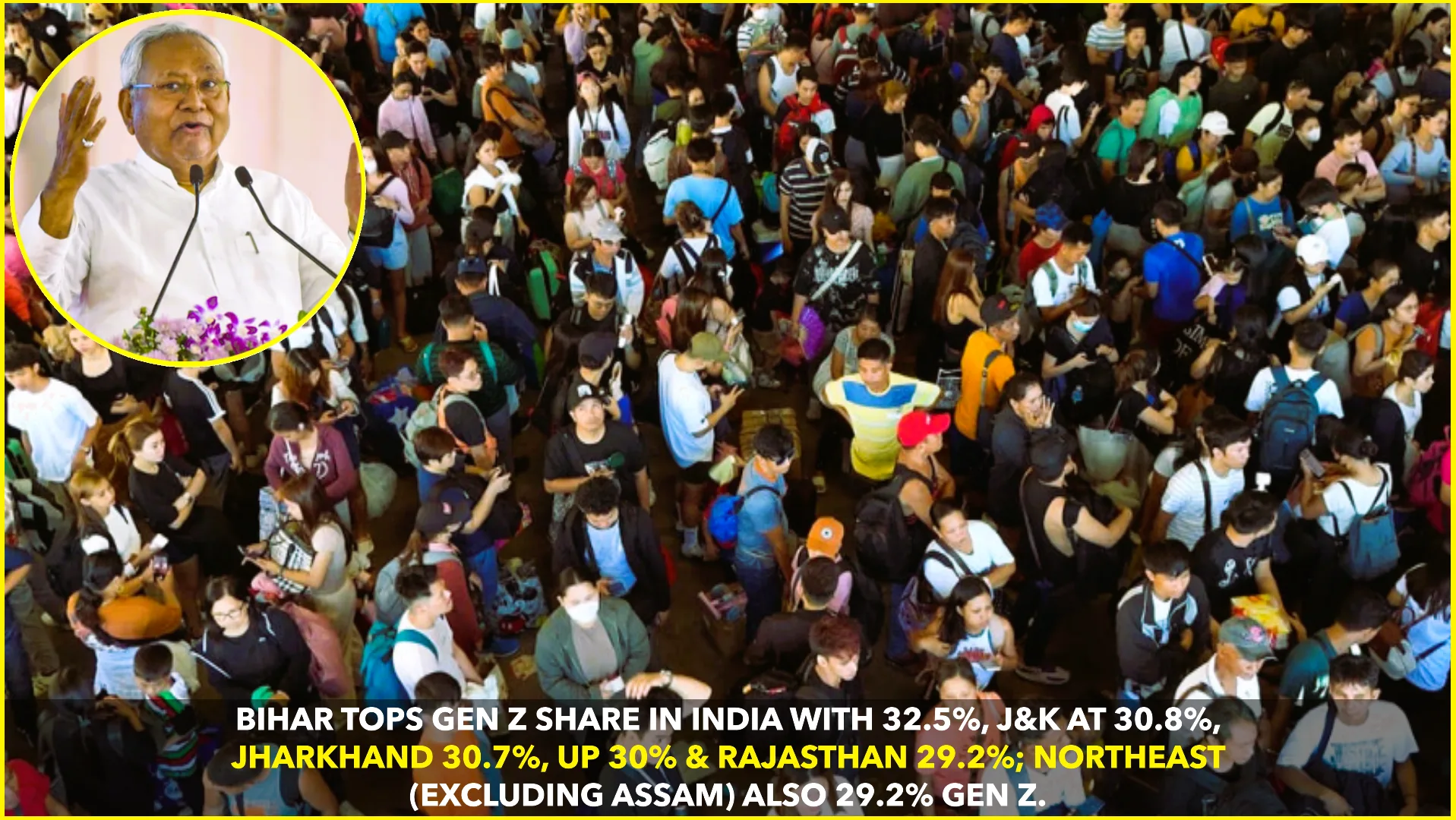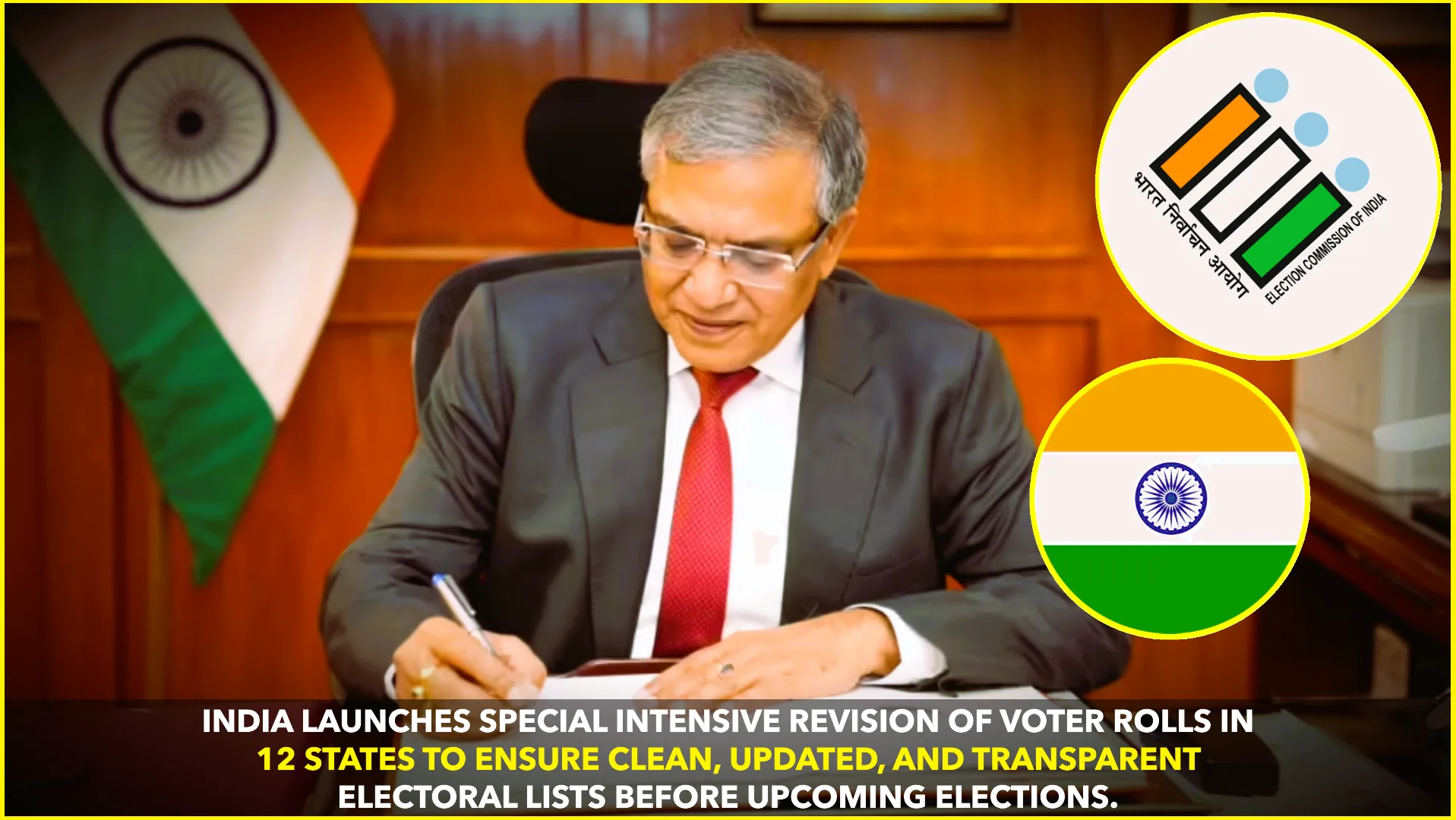Bihar commands the largest share of Gen Z residents among all Indian states and union territories — 32.5% of its population belongs to Generation Z, according to fresh data from India In Pixels. That’s higher than any other region in the country, marking Bihar as home to the most youth in the 1997–2012 birth cohort.
Following closely behind, Jammu & Kashmir registers a Gen Z share of 30.8%, with Jharkhand at 30.7%, Uttar Pradesh at exactly 30.0%, and Rajasthan at 29.2% — rounding out the top five states with the youngest profiles in the nation.
Interestingly, the data also spotlight the Northeastern states (except Assam) as a youth-dense region, with an average Gen Z population of 29.2%. These figures position the Northeast alongside Rajasthan in terms of youthful proportions. Inshorts – Stay Informed+1
Why It Matters
Gen Z—those born roughly between 1997 and 2012—is often viewed as India’s driver of future innovation, digital transformation, and cultural change. A high proportion of Gen Z means a state has a large base of digitally savvy, socially conscious, and economically active young people. This demographic trend has implications for education, employment, politics and economic planning.
Bihar: A Youth-Centric State
At 32.5%, Bihar leads by a comfortable margin in this ranking. Such a strong youth presence could fuel the state’s ambitions in education reform, skill development initiatives and tech-based opportunities.
Other Regions: Close Behind
- Jammu & Kashmir (30.8%) & Jharkhand (30.7%) are nearly neck-and-neck, signaling fast-growing young populations in both states.
- Uttar Pradesh enters the top five with exactly 30% Gen Z share, underlining its massive youth potential.
- Rajasthan (29.2%) rounds out the list, its demographic profile echoing the youthful energy elsewhere.
Northeast’s Surprising Strength
Apart from Assam, the Northeastern states together maintain a significant Gen Z proportion of 29.2%, rivaling Rajasthan and reflecting a broader pattern of youth concentration beyond central India. Assam alone appears to be the exception, pulling overall numbers lower. Facebook+1
Broader Impacts
- Education policy: Regions with larger Gen Z cohorts may require expanded higher-education capacity, vocational training and digital literacy programmes.
- Employment drives: States with huge youth pools could prioritise entrepreneurship, internships and job creation in tech, services, and MSMEs.
- Politics & representation: Young voters typically bring fresh concerns—mental health, climate action, digital inclusion—that parties and policymakers must address.
- Culture & digital media: This generation shapes trends across social media, entertainment, activism, and consumer behaviour.
What the Numbers Don’t Show
While India In Pixels provides the share percentages, the total population base differs by state. For example, Uttar Pradesh has a much larger total population than Jammu & Kashmir or Jharkhand—so in absolute numbers, the size of the Gen Z group might vary significantly. Patrika News+1
Final View
India remains one of the youngest major nations globally. Among its states and union territories, Bihar stands out with 32.5% Gen Z, followed by Jammu & Kashmir (30.8%), Jharkhand (30.7%), Uttar Pradesh (30.0%), and Rajasthan (29.2%). Meanwhile, the Northeastern region (excluding Assam) also holds a comparable Gen Z share of 29.2%.
As India accelerates toward a digital and entrepreneurial future, the concentration of youth in these regions offers both challenges and opportunities—for governance, investment, and social innovation.










